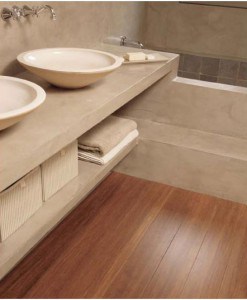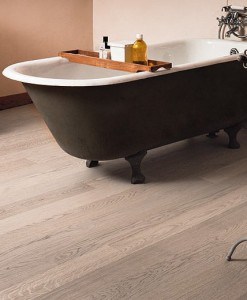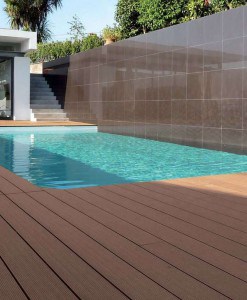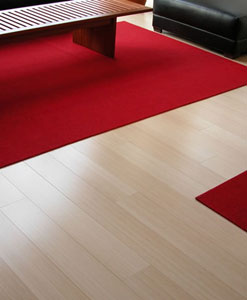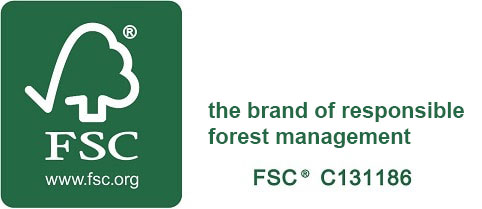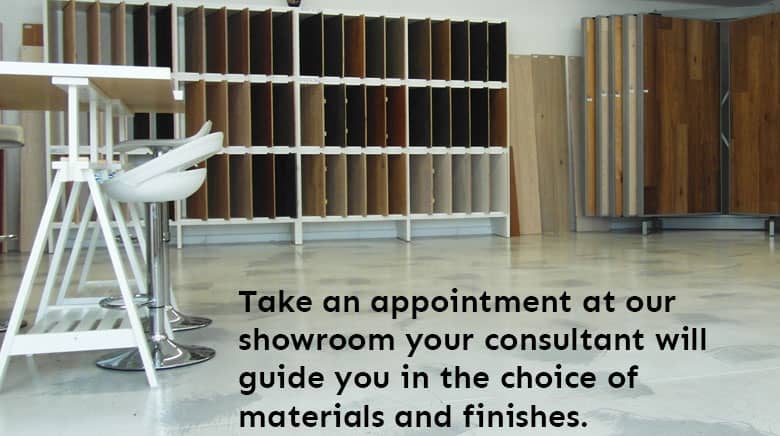CHARACTERISTICS OF PARQUET AND FUNDAMENTAL DIFFERENCES
Armony Floor solid wood floors for parquet are made of solid wood (solid wood) made from a single essence. It allows you to have floors in which the wood has a consistent thickness and therefore durable over time, provided that the raw wood from which the strips (or lamellas) are obtained has been previously treated in the most appropriate way, through a series of phases not to be underestimate, which are: curing, drying and stabilization. In fact, wood is a “living” natural material and as such extremely sensitive to variations in temperature and humidity. In addition to this, the period, the type and the direction in which the sawing was carried out also affect its stability. Not wishing to enter into the merits of these arguments, which, although of obvious importance, are beyond the scope of this work, it is still considered appropriate to briefly mention the three phases to which wood must always be subjected before being processed, especially for the realization of solid wood floors:
a) seasoning must be carried out by leaving the sawn timber overlapping and appropriately spaced (for effective air circulation) in large open and covered spaces, for variable periods of time depending on the wood species. In this phase, the wood loses most of the moisture absorbed by the soil during the life of the tree and is therefore ready for the next phase;
b) drying has the purpose of completing the “drying” of the wood, bringing it to humidity levels that are as close as possible to those of the environment in which it will be installed. In the temperate climates of our latitudes, this drying allows the humidity of the wood to be brought to 9%, a good value to avoid subsequent swelling and cracks in the laid wooden floor;
c) stabilization is a further treatment, useful for preserving over time the characteristics that the wood has reached at the end of the seasoning and drying phases. Due to its cost, it is a treatment that is sometimes neglected by manufacturers, but its importance remains crucial to having good quality and long-lasting parquet. A characteristic aspect that frequently distinguishes a solid wood parquet from a pre-finished parquet is the size of the individual pieces that compose it. The slats of the solid wood are in fact generally (but not always, in fact our solid floors are about one meter!) Rather small, compared to the slats or planks of the pre-finished parquet and this for the reasons mentioned above: being a material living natural, solid wood is always affected by variations in humidity and temperature in proportion to its size. To limit the problems that this can cause for a flooring, in coatings made exclusively of solid wood (and not products derived from wood and therefore treated in such a way as to make them more stable anyway) we opt to keep the dimensions of the pieces that constitute it reduced, thus reducing dimensional variations.
As the thickness of “workable” natural wood is greater, even after wear, the parquet can be periodically regenerated by repeating the sanding and painting treatments several times, thus reducing the thickness of the material, but without compromising its characteristics and functional performance. than aesthetics. The value of traditional solid wood parquet therefore lies precisely in its ability to last over time and to be able to withstand many regeneration cycles, without having to be replaced, as long as it is made with good quality wood (in the most appropriate essences, especially parquet in bamboo), suitably pre-treated before installation, and applied by expert personnel, according to the most appropriate techniques and on suitable substrates. The pre-finished multilayer parquet consists of several layers of wood, of which the upper one, with a minimum thickness of 2.5 mm is in noble wood (natural), while the subsequent ones (one or more) are in so-called “poor” wood ( generally high or medium density wood fiber), coupled with suitable adhesives. Generally, the individual pieces to be laid (boards, planks or maxiplance) are larger than the traditional solid wood; this is allowed by the greater dimensional stability of the pieces that are treated and stabilized already in the production phase in the factory and are therefore less sensitive to thermo-hygrometric variations in the environment.
THE ADVANTAGES OF PRE-FINISHED PARQUET
The components of the pre-finished parquet (compared to those of the raw parquet) receive the appropriate sanding and surface painting treatments already in the production phase in the factory; therefore, once installed, the flooring can be walked on immediately, without requiring further protective interventions before use. All these characteristics have led in recent years to a wide diffusion of pre-finished parquet, especially in environments where there are no special needs of value and where the criteria of speed and simplicity of installation (often in already inhabited environments where it is not possible to wait the rather long times of sanding and especially of painting) are preponderant. Setting and characteristics of the screed for wooden floors. As with all types of floor coverings, in order to obtain good installation results, it is necessary to operate starting from good quality substrates and good construction. As regards parquet, in particular, it is essential to have substrates available with a very small amount of water (humidity), which, as mentioned, greatly affects the behavior of wood, a living material and very sensitive to thermo-hygrometric variations. . That said, we can say that the wooden floor can be laid on different types of substrates, as long as they are properly made and / or restored.
a) SCREEDS BASED ON HYDRAULIC OR ANHYDROUS BINDERS
The most common of the substrates made for laying parquet is the classic screed based on hydraulic binders (in the minimum thickness of 4-5 cm), which however has longer drying times (always depending on the thermal and humidity of the environment in which it is built), which can reach and exceed even than 120-150 days. To overcome this problem, anhydrite-based binders (gypsum) are often used, or hydraulic-based binders with additives to obtain faster drying. However, it is essential that the screed has a compactness suitable to withstand the loads and stresses transmitted to it by the wooden cladding, also allowing it to be adequately anchored (depending on the type of installation), without the formation of cracks or fissures, which compromise its homogeneity. and flatness. If you want to create a heating (and / or cooling) floor, it is essential to increase the thickness of the screed, inside which the air conditioning system ducts must be inserted, which must be drowned in the screed, with a layer that overlaps for a thickness of about 3 cm, so that the heat emitted by the system is distributed evenly on the upper surface of the screed, without creating thermal shocks on the part in contact with the wooden coating. & EgravEgrave; however, it is always essential to check the presence of construction and expansion joints, in order to avoid damage to the flooring due to differential movements of the screed.
b) PRE-EXISTING FLOORING
The parquet laying substrate can also consist of an existing floor in ceramic, stone, marble, concrete, wood, etc. In this case, it is necessary to check the perfect flatness, homogeneity and cleanliness of the surface on which the glue for laying the parquet will be applied, possibly working with preparatory interventions to eliminate dirt, dust, grease, waxes, etc., as well as smoothing or scarifying the surface to eliminate unevenness and improve adhesion of the adhesive. If the existing floor is made of wood, having verified its effective solidity, it is possible to lay the new wooden cladding directly on the existing one, taking care to position the frame of the new one orthogonally to that of the old.
c) PANELS BASED ON WOOD MATERIALS
Sometimes, for reasons of insulation and / or dry laying, it is chosen to lay the parquet on panels made of wooden materials. In these situations it is appropriate: choose water-repellent panels; separate the support (slab) from the wooden paneling with a vapor barrier layer (polyethylene sheet), to prevent moisture passing appropriately size the thickness of the paneling in relation to the thickness of the wooden coating; take care to maintain an adequate separation from the walls, to avoid tensions and lifting, which compromise the good result of the installation.
INSTALLATION OF WOODEN FLOORS (SOLID AND PRE-FINISHED)
Before starting the actual laying of the parquet, it is necessary to make sure that some conditions are met: • the laying surface must be completely dry (test carried out with a carbide hygrometer); • the laying surface must be at a height, well cleaned and leveled, (compact, do not “dust”), essentially ready for the application of the adhesive, the dry installation or the nailing of the parquet, depending on the type of installation chosen during the design phase; At this point the laying techniques can be different, depending on the type of support and the characteristics of the wood to be laid (type of solid or pre-finished parquet, size of the pieces, etc.). The best known and used techniques are: a) WOODEN FLOORS: NAILED LAYING The nailed laying of parquet (nailed parquet) is the most traditional and is generally adopted for solid wood strips and planks (thickness from 10 to 22 mm; width from 6 to 14 mm; length from 40 to 200 mm) worked with interlocking male and female. The installation takes place by fitting the pieces together and then nailing them to the wooden joists previously drowned in the cement mortar substrate. Of course this type of installation, one of the most expensive and longest to carry out, is not possible on pre-existing floors, but, if done well, it gives lasting results for a long time. It also provides for subsequent finishing phases of the paved surface, by sanding and painting.
b) WOODEN FLOOR: GLUED LAYING
The glued laying of parquet (adhesive parquet) is the most used type of laying because it allows to create parquet on practically any support, as long as it is clean, homogeneous and regular: where possible Armony Floor recommends this type of laying. It involves spreading a layer of glue and then placing the pieces of wood on it (strips, solid wood planks, maxiplance, pre-finished planks, lamparquet), possibly fitting them together, if their shape so requires. The type of glue depends on the characteristics and compatibility with the substrate and with the wood to be laid (mono or bi-component polyurethane glues);
c) WOODEN FLOORS: FLOATING or FLOATING LAYING
The floating laying (floating parquet, also called floating parquet) is the most used dry laying for the pre-finished plank, which involves the laying of a layer of sound-absorbing material (polyethylene or, better still, cork, more expensive but more effective), on which to place the parquet components, gluing them together in correspondence with the joints, but without solidarizing them with the support. The purpose of the sound-absorbing mantle is to maintain constant contact between the covering and the support (which obviously must be as smooth and regular as possible), avoiding the formation of zones with differentiated sound. Naturally, in order for the installation to be effective and to be maintained over time, without detachments and / or lifting, it must be taken care of and carried out by expert and specialized personnel. DIY lovers can opt for the maxi plank with click joint: special self-locking joints that do not require any glue, guarantee a stable and easy to lay flooring.
Surely interesting, in addition to the laying techniques, are the geometries and laying, which help to give the floor the desired aesthetic appearance and which are largely taken from those typical of natural stone. Among these we mention the main ones:
• “ship deck” laying (also called “running” or “irregular formwork”), whereby the pieces of wood (of different lengths) are laid offset from each other. The result obtained is a variegated, non-repetitive design, which offers the highest aesthetic level if the wooden elements are placed transversely with respect to the main light source (window), thus limiting the visibility of the joints;
• the “regular formwork” laying and the “herringbone” laying, also made with wooden pieces offset from each other, but in a more regular and repetitive position. They allow to obtain good results especially in historical environments, with large and planimetrically irregular rooms, as they reduce the perception of spatial irregularity and tend to visually restrict the environments;
• mosaic laying, which uses pieces of wood that differ in essence and size, to create a particular geometry on the basis of a predefined design. In this case we proceed by placing the pre-numbered pieces with glue from the center towards the edges of the drawing. The result that is obtained, if the installation is well done by combining wood essences with compatible characteristics, is of certain aesthetic and formal value. During the installation phase it is always good to remember:
• to leave a 7-8 mm margin between the perimeter of the parquet and the walls, to allow for possible differential movements of the wood (this space will be hidden by the installation of the skirting board);
• to start laying the parquet from the straightest wall, reserving any necessary adjustments to the opposite wall;
• not to proceed with gluing in the cold season or even when it is too hot, to limit problems related to humidity and temperature.
Finishing, conservation, cleaning and maintenance of parquet wood floors Once the laying operations have been completed, which we have seen to be partly similar for both the solid parquet and the pre-finished parquet, we proceed with the finishing works, which are essential for a good preservation of the wooden floor over time. At this point, however, a distinction must be made between pre-finished parquet and solid wood parquet: while the pre-finished parquet, at the end of the installation, is immediately walkable (without prejudice to the drying time of the glue) and usable, the solid wood parquet must undergo further surface finishing treatments, which essentially consist of sanding, sealing and painting. Sanding is carried out using grinding machines equipped with gradually finer-grained abrasive papers, in three basic steps: graining (with coarse-grained paper), medium-grain sanding and sanding (with very fine grain). These operations must necessarily be carried out dry (unlike what happens with other types of flooring materials), often causing lifting of wood dust, which must be eliminated before the subsequent treatments by means of a thorough cleaning (possibly with suction machines to avoid scratch the surface with sanding residues). During the sanding operations it is important that the operator in charge is equipped with suitable PPE to safeguard his health (mask with filter against wood dust, protective goggles, etc.). Sealing consists in treating the wooden coating with products that close the pores, so that the parquet becomes impermeable to liquids and can therefore be preserved better over time. However, this modifies the “naturalness” of this type of coating, which thus loses most of its breathability characteristics.
The varnishing allows to cover the raw or pre-polished parquet with special materials that improve its surface characteristics, especially in terms of surface resistance to abrasion, wear and stains, giving the desired appearance (matt, glossy, satin, etc.). As for the materials used for this treatment, until recently the most used were the polyurethane varnishes with a glossy / satin effect, which gave brightness to the parquet, but which completely occluded the pores, generating a result with an often unnatural appearance. . Currently, polyurethane paints with an opaque effect are mainly used which keep the naturalness of the parquet intact, ensuring excellent resistance. Another possibility is that of natural oils (used in the most ancient floors), which impregnate the wood making it resistant to attacks by fungi, molds and bacteria, preparing it for the subsequent application of wax (bees) which constitutes the definitive protective treatment. In this second case, these are interventions that require a greater amount of time, maintenance (an extraordinary treatment once a year, depending on the use) and money but which preserve the characteristics of the wood in the most natural way and are even less harmful to human health. Currently, paints that use water as a solvent are also gaining ground, which, while showing resistance characteristics similar to polymeric paints, have the advantage of being more compatible with human health and environmental protection.
ARMONY FLOOR USES ONLY CERTIFIED ECOLOGICAL PAINTS THAT DO NOT RELEASE FORMALDEHYDE
To maintain the properties and performance of a wooden floor (both solid and pre-finished) over time, it is advisable to keep in mind some simple but fundamental precautions for its care: place doormats or mats at the entrances, in order to minimize the intrusion of dust and abrasive dirt present on the shoes which, over time, damage the paint and the surface of the wood;
• avoid concentrating excessive loads on small surfaces, trying to minimize collisions (of falling heavy objects) and handling of concentrated loads (chairs, tables, pedestals, etc.);
• do not place carpets or roofing elements on the wooden floor, in order to avoid that the covered areas remain of a different shade than those directly exposed to light. The darkening of the parquet due to the effect of light is in fact • a natural phenomenon, particularly evident, especially in the first time after laying, for tropical wood essences;
• clean the varnished wooden floor with a damp cloth (not too wet) and, if necessary, with a neutral detergent;
• if the floor is treated with wax, it must be periodically polished with special liquid wax-based products, to revive its appearance. As far as extraordinary maintenance is concerned, these generally involve regeneration of the parquet surface, necessary following evident wear caused by frequent and intense foot traffic. If the floor is painted, these interventions consist in removing the residual layers of paint by sanding and then proceeding to give new coats of paint.
If, in addition to the protective layer, wear has also affected the wood, it is necessary to resort to a deeper intervention, which consists in smoothing the entire wood surface to completely remove the worn part and then proceed with the new painting.
This type of intervention, also called relamatura, is carried out 10-15 years after installation (or earlier, if the state of wear makes it necessary) and allows the parquet to be returned to its original condition, only slightly thinner (in the order of 0.5 mm for each rebound).
Naturally the solid parquet, thanks to the greater thickness of the noble wood, withstands this type of intervention for a number of times higher (7-8) than the pre-finished (2-3) even if today, with orbital sanders that take away only a few tenths of a millimeter, a pre-finished parquet can be sanded twice as often, even 5/6!












